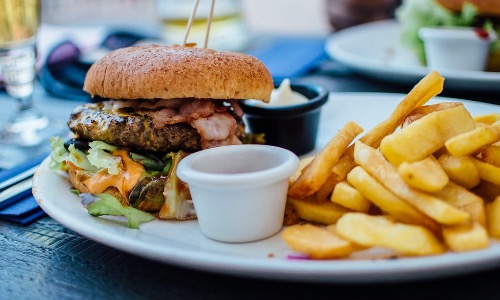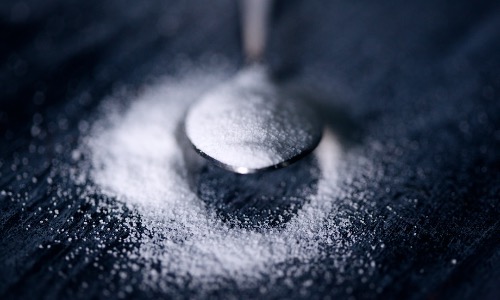The government has said it will ban junk food adverts before the 9pm watershed and launch a short consultation on whether that should be extended to a blanket ban on adverts for sweets and fast food online. Without question is should.
Continue readingWellbeing and Work – The New Priority
Meanwhile in companies that have been the most creative with Wellbeing and made a core foundational principle of the business, offering help and support in all areas of health, nutrition and fitness there have been astounding results. For example, e-commerce company Nextjump proved that there had been a fourfold increase in annual sales growth from 30% to 120% and the only variable involved was the difference in the investment in it’s people! This statistic is truly astounding and illustrates that the right Wellbeing Approach is not simply a tick box nice to have extra but is business driven and a company issue that directly affects and drives the bottom line.
Continue readingFood, Production and Responsibility post Covid-19
I never want to go back to the way things were
Since the beginning of lock down there has been constant talk of returning to ‘normal’ or going back to the way things were before Covid-19.
I don’t want to go back to the way things were.
The way things were, got us here.
The way we treat our planet.
The way we treat the other animals and creatures we share our planet with.
The way we think about and treat our food in the main.
The way food and eating is incidental and dispensed with at speed in this ‘more, quicker, harder, faster’ world we live in.
Where we can have everything – and invariably do at the click of a button.
Where our priorities are all skewed and we live life on a virtual treadmill.
Food has been a theme throughout this period. Whether the focus is on empty supermarket shelves, where people hoarded ingredients for themselves far beyond need, or the constant snacking that has been a theme and we are seeing all over social media.
Or the Food Banks and Soup Kitchens that have just not been able to provide anything near like the amount of food needed to people suffering hardship at this time.
The covid-19 pandemic will see more than a quarter of a billion people suffering from acute hunger by the end of the year according to new figures from the WFP ( World Food Programme). When we think we have had it hard, there is no hint of a comparison to those living in conflict zones at this time.
Poor nutrition leaves children especially vulnerable and it is vital that commercial trade continues to flow as humanitarian work depends on it.
Worldwide hoarding is going on and countries are putting up trade barriers and WFP chief economist Arif Hussain says ‘Just like in developed countries where governments are doing all they can to assist their people, we need to do the same for tens of millions of people’. An impossible task to be faced with.
I have taken part in two Food Summits since lock down where panels of worldwide revered and respected doctors, scientists, nutrition experts and writers have discussed the roots of Covid-19 and the direct link to the way we produce food both here in the UK and worldwide.
Although the outbreak was initially tied to the Wuhan market and pangolins there is emerging evidence that suggests the virus was spreading in the community since October before being recognised as the virus we all now know as Covid-19. This brings us to examine the way animals are bred all over the world but particularly in the wildlife trade. The immune system of animals who are kept in awful conditions are weakened as a result and this means there is a combination of species and pathogens leading to mutating viruses that can spread very easily from species to species.
Although the Covid-19 outbreak has led to more regulations because of public pressure around the wild animal trade it is thought the restrictions are narrow and won’t last long enough or go far enough.
Then there is the way food is globally produced and the destruction of habitats for so much of our wildlife. For example, the beef industry is responsible for 65% of rainforest destruction and the emergence of new pathogens tends to occur where humans, and big businesses are changing the landscapes forever, farming intensively, and building larger communities.
In the process we humans are destroying ecosystems, causing no end of destruction to the biodiversity, and releasing new viruses. We are also developing a resistance to anti biotics.
You would think we had learned the most valuable lessons from the break outs of SARS in Chinese wet markets in 2002 linked to civets, Australia’s 1992 Hendra virus from the treatment of horses, , camels indicated in the Middle East Respiratory Syndrome in 2012 and chimpanzees hunted for bushmeat linked to Ebola in 2014.
But instead of these cases leading to urgent action and huge changes, we are now faced with Covid-19.
The 5 trillion agribusiness industry ‘is in a strategic alliance with influenza’ argues evolutionary biologist Rob Wallace.
So I for one do not want to go back to what we had before.
From people having time to cook in their kitchens from scratch for the first time in ever.
To children baking and using ingredients they haven’t experimented with before.
To people questioning the origins of the food they are eating.
We need change.
We need to think about the way the world organises food production.
Our wilderness and planet has to be protected. To avoid future worldwide pandemics unsanitary means of production has to end and we must dramatically reduce dairy and meat farming, eliminating all factory farming all together.
As human beings privileged to even share our planet with all the other amazing array of creatures we must take responsibility for and stop their barbaric treatment.
Food is a fundamental need to us all.
We share this responsibility to make it a priority globally to our kitchen, from our tables to our mouths.
We are what we eat has much more of a deep and poignant meaning right now.
I am always highlighting that our cells, every part of our being is only derived from every mouthful we take.
Let’s take the responsibility on exactly what this is.
Where it comes from.
How it is farmed.
What are the effects on our planet and the creatures we share it with.
And of course, is it nutritionally as well as ethically sound.
What changes will you be making?
Sugar! The sweetest of killers
Sugar!
May sugar be the sweetest killer? Sugar has now overtaken cigarettes as the biggest contributor to lifestyle disease. It is slipped into so many products as other names and ingredients that we rarely even recognise it is there or check the quantities. In fact sugary drinks alone cause 184,000 deaths a year according to a study and report conducted by Tufts University in Boston. 76% of those deaths occurred in low to middle income countries. We now know the situation in the UK has slightly improved when it comes to fizzy drinks, but what about all the numerous other hidden sugars?
This blog is written for me by my good friend and psychotherapist Dr Robert Owen, who managed and reversed his own diagnosis for Diabetes Type 2.
Confessions of a sugar junkie.
I am addicted to sugar and it could kill me. I suffer from type 2 diabetes which, if not managed, can result in complications like blindness, amputation, heart problems and death. In spite of this knowledge I sometimes sucome to sugar loaded fare. I belong to a large family and there are lots of birthday parties. It’s normally that ‘small’ slice of cake that tempts me even though I know so much about the danger. I can’t say I haven’t been warned many times – as far back as the 1960s a friend introduced me to Professor Yudkin’s book “Pure, white and deadly”. Yet, I still sometimes find the temptation too much to resist. So why do I give into temptation when cake is on offer?
I know I’m not alone. How did we become sugar junkies? Who are the pushers? And other vital questions.
It started innocently enough
Sugar has been grown and used in India since ancient times. The word sugar derives from the Sanskrit language. How it was originally used is unclear, but it was certainly used as medicine in the Ayurvedic tradition.
As sugar juice it was not plentiful or cheap, in most parts of the world in ancient times honey was used for sweetening. Therefore, sugar remained relatively unimportant in diets until the Indians discovered methods of turning sugarcane juice into granulated crystals which were easier to store and to transport. This was known as Khaṇḍa, which is the source of our word candy.
During their campaigns in the Holy Land, Crusaders came across traders with “sweet salt” and brought this granulated sugar back to Europe.
It was a luxury and therefore not available to the majority of the population in Europe until the 18th century, when it gradually became more widely available. By the 19th century it came to be considered a necessity by the better-off. A change in taste occurred and the demand for sugar as an essential food ingredient soared.
During the Napoleonic Wars, sugar-beet production increased in continental Europe because of the difficulty of importing sugar when shipping was subject to blockade. And by the late 19th century sugar beet was the main source of sugar in Europe.
Sugar was rationed during World War I and more extensively during World War II, so we managed to exist with very little of it for many years in the 20th Century. I remember the wonderful day in September 1953 when sweets ‘came off rations’ and we kids gorged ourselves sat on the lawn in our back garden. This could be when my addiction started.
How did I get hooked?
Homo Sapiens has been around for a million years and for most of the time have survived without non-naturally occurring sugars, so it’s not a necessity. Why do we love it? To answer this question, we need to consider the evolutionary reason for the desire for sweet foods. It’s because our hunter gatherer ancestors searched for sweet foods (those containing naturally occurring sugars) because they weren’t poisonous.
And why does sugar make us happy? We are told that ‘happiness’ is partly the result of a biochemical process which relies partly on the neurotransmitter serotonin. I know as a psychotherapist that deficiency in serotonin is associated with depression. If we eat lots of carbohydrates – especially sugar, we can increase serotonin synthesis giving us short term pleasure but like any drug the effect doesn’t last long, and we have to consume more. Who’s eaten a bar of milk chocolate or even a box at one go? Scientific studies are available that suggest that sugar may act in a drug-like way and creates addiction in human beings. It can function very much like an opiate.
Are we consuming more than we know? Who are the pushers?
Many people are trying to come off their sugar dependency, but it’s easy to underestimate how much we’re actually consuming. Most people don’t realise when they’re eating it. One of the reasons is that many foods contain hidden sugars, including some foods that you wouldn’t even think of as being sweet. And what is most disturbing is that even products marketed as “low-fat” or “light” often contain more sugar than the regular versions.
Added sugars aren’t a necessary nutrient in your diet. Although small amounts are fine, they can cause serious harm if eaten in large amounts on a regular basis.
The British Heart Foundation recommends that people over age 11 should limit their ‘free’ sugar intake to 30 gms per day, while 7-10-year olds 24 gms and 4-6-year olds 19gms. A teaspoon of sugar contains 4 grams. Even so some experts believe this recommendation is too generous.
The easiest way to avoid hidden sugar in your meals is to make them at home so you know exactly what’s in them.
Convenience food manufacturers add sugar in various guises see ‘Don’t kid yourself these are all sugars’.
What is the government doing about this health destroying addiction?
After concerns about the rising level of obesity, tooth decay and other issues, particularly amongst children in the UK , the Government in 2018 introduced a ‘sugar tax’ on sweetened drinks. Officially called the Soft Drinks Industry Levy (SDIL), the tax puts a charge of 24p on drinks containing 8g of sugar per 100ml and 18p a litre on those with 5-8g of sugar per 100ml, directly payable by producers to HM Revenue and Customs (HMRC).
It aims to reduce sugar consumption by persuading producers to reformulate their high sugar brands and avoid paying the levy.If they don’t reformulate, it’s up to manufacturers to decide whether to pass the levy cost on to consumers.
It’s not the first attempt to reduce sugar in the UK. In 2017, Public Health England (PHE) called for a 20% cut in sugar content within food produce by 2020, with 5% being the target for the first year. However a new PHE report released in May 2018 found that food manufacturers and supermarkets have only managed to cut 2% of sugar content. So, I’m not holding my breath over whether this levy will have much of an effect.
HOW CAN WE GET CLEAN?
4 grams = 1 teaspoon of sugar
Here are some foods and drinks that contain much more sugar than you would think.
1. Low-Fat Yogurt (my bête noir)
Yogurt can be a highly nutritious food. However, not all yogurt is the same
Like many other low-fat products, low-fat yogurts have sugar added to them to enhance flavour.
For example, 245 grams of low-fat yogurt can contain up to 47 grams of sugar, which is 12 teaspoons. This is more than the daily limit for men and women in just a pot of so-called “healthy” yogurt.
Furthermore, low-fat yoghurt doesn’t seem to have the same health benefits as full-fat yoghurt. It’s best to choose full-fat, natural or Greek yoghurt. Avoid yoghurt that has been sweetened with sugar.
Breakfast cereals are a popular, quick and easy breakfast food.
However, the cereal you choose could greatly affect your sugar consumption, especially if you eat it every day.
Some contain 12 grams, or 3 teaspoons of sugar in a small 30-gram serving.
Check the label and try choosing a cereal that is high in fiber and doesn’t contain added sugar.
Or better yet, wake up a few minutes earlier and cook a quick healthy breakfast with a high-protein food like eggs. Eating protein for breakfast can help you lose weight.
3. Baked beans
Baked beans are another savoury food that is often surprisingly high in sugar.
A cup (254 grams) of regular baked beans contains about 5 teaspoons of sugar.
If you like baked beans, you can choose low-sugar versions, which contain about half the amount of sugar found in regular baked beans.
4. Tomato Ketchup
Tomato ketchup is one of the most popular condiments worldwide, but it is often loaded with sugar.
Try to be mindful of your portion size when using ketchup and remember that a single tablespoon of ketchup contains 1 teaspoon of sugar.
Like whole fruit, fruit juice contains some vitamins and minerals.
However, despite seeming like a healthy choice, these vitamins and minerals come with a large dose of sugar and very little fibre.
It usually takes a lot of fruit to produce a single glass of fruit juice, so you get much more sugar in a glass of juice than you would get by eating whole fruit. This makes it easy to consume a large amount of sugar quickly. PRESS JUICES / CONCENTRATED dilution?
In fact, there can be just as much sugar in fruit juice as there is in a sugary drink like cola. The poor health outcomes that have been convincingly linked to sugary drinks may be linked to fruit juices too.
It’s best to choose whole fruit and minimize your intake of fruit juices.
Added sugars are often hidden in foods that we don’t even consider to be sweet, such as spaghetti sauce.
All tomato sauces will contain some natural sugar given that tomatoes are a fruit.
However, many spaghetti sauces have extra sugar added to them as well.
The best way to ensure you aren’t getting any unwanted sugar in your pasta sauce is to make your own.
However, if you need to buy ready-made spaghetti sauce, check the label and pick one that either doesn’t have sugar on the ingredients list or where it’s listed very close to the bottom. This indicates that it’s not a major ingredient.
Sports drinks can often be mistaken as a healthy choice for those who work-out.
However, sports drinks are designed to hydrate and fuel trained athletes during prolonged, intense periods of exercise.
For this reason, they contain high amounts of added sugars that can be quickly absorbed and used for energy.
In fact, a standard 570 ml bottle of a sports drink will contain 32 grams of added sugar and 159 calories, which is equivalent to 8 teaspoons of sugar.
Sports drinks are therefore categorized as “sugary drinks.” Like fizzy drinks and fruit juice, they have also been linked with obesity and metabolic disease.
Unless you’re a marathon runner or an elite athlete, then you should probably just stick to water while exercising. This is by far the best choice for most of us.
8. Chocolate Milk (or any flavoured)
Chocolate milk is milk that has been flavoured with cocoa and sweetened with sugar.
However, despite having all the nutritious qualities of milk, a 230 ml glass of chocolate milk comes with an extra 2 teaspoons of added sugar, which most of us could do without.
9. Granola and cereal
Granola is often marketed as a low-fat health food, despite being high in both calories and sugar.
The main ingredient in granola is oats. Plain rolled oats are a well-balanced cereal containing carbs, protein, fat and fiber.
However, the oats in granola have been combined with nuts and honey or other added sweeteners, which increases the amount of sugar and calories.
In fact, 100 grams of granola contains nearly 400 calories and over 6 teaspoons of sugar.
If you like granola, try choosing one with less added sugar or make your own. You can also add it as a topping to fruit or yogurt, rather than pouring a whole bowl.
Flavoured coffee is a popular trend, but the amount of hidden sugars in these drinks can be shocking.
A large flavoured coffee in some coffee shop chains can contain up to 25 teaspoons of sugar. FRAPPE
That’s equivalent to 100 grams of added sugar per serving, or nearly 3 times the amount you would get from a 340 ml can of cola.
Considering the strong link between sugary drinks and poor health, it’s probably best to stick to coffee without any flavoured syrups or added sugar.
11. Iced Tea AUTOMATICALLY OFFERED
Iced tea is a chilled tea, usually sweetened with sugar or flavoured with syrup.
It’s popular in various forms and flavours around the world, and this means the sugar content can vary slightly.
Most commercially prepared iced teas will contain around 33 grams of sugar per 340 ml serving, which is about the same as a can of coke.
If you like tea, pick regular tea or choose iced tea that doesn’t have any sugars added.
12. Protein Bars (I often fall for this one)
Protein bars are a popular snack.
Foods that contain protein have been linked with increased feelings of fullness, which can help with weight loss.
This has led people to believe that protein bars are a healthy snack.
While there are some healthier protein bars on the market, many contain around 30 grams of added sugar, making them similar to a chocolate bar.
When choosing a protein bar, read the label and avoid those that are high in sugar. You can also eat a high-protein food like yogurt instead.
Soup isn’t a food that you generally associate with sugar.
When it’s made with fresh whole ingredients, it’s a healthy choice and can be an effective way to increase your vegetable consumption without much effort.
The vegetables in soups have naturally occurring sugars, which are fine to eat given that they usually come in small amounts and with lots of other beneficial nutrients.
However, many commercially prepared soups have a lot of added ingredients, including sugar.
To check for added sugars in your soup, look at the ingredients list for things like sucrose barley malt, dextrose, maltose and other syrups.
The higher up on the list an ingredient is, the higher its content in the product. Watch out for when manufacturers list small amounts of different sugars, as that’s another sign the product could be high in total sugar.
For on-the-go breakfasts, cereal bars can seem like a healthy and convenient choice.
However, like other “health bars,” cereal bars are often just sweets in disguise. Many contain very little fiber or protein and are loaded with added sugar.
All fruit contains natural sugars. However, some tinned fruit is peeled and preserved in sugary syrup. This processing strips the fruit of its fiber and adds a lot of unnecessary sugar to what should be a healthy snack.
The canning process can also destroy heat-sensitive vitamin C, although most other nutrients are well preserved.
Whole, fresh fruit is best. If you want to eat canned fruit, look for one that has been preserved in juice rather than syrup, which has a slightly lower sugar content.
Blending fruits with milk or yogurt in the morning to make yourself a smoothie can be a great way to start your day.
However, not all smoothies are healthy.
Many commercially produced smoothies come in large sizes and can be sweetened with things like fruit juice, ice cream or syrup, which increases their sugar content.
Some of them contain ridiculously high amounts of calories and sugar, containing over 96 grams, or 24 teaspoons of sugar in a single serving.
For a healthy smoothie, check the ingredients and make sure you watch your portion size.
| Don’t kid yourself! Know what the labels mean – these are all sugars: Barley maltBeet sugarBrown sugarButtered sugarCane juice crystalsCane sugarCaster sugarCoconut sugarConfectioner’s (powdered) sugarCorn sweetenerCrystalline fructoseDate sugarDextran, malt powderEthyl maltolEvaporated cane juiceFruit juice concentrateGolden sugarInvert sugarMaltodextrinMaltoseMolassesMuscovado sugarOrganic raw sugarPanelaPalm sugarRapadura sugar |
| Common syrups to look out for on food labels include: Agave nectarCarob syrupGolden syrupHigh-fructose corn syrupHoneyMalt syrupMaple syrupOat syrupRice bran syrupRice syrup |
BE ALERT WHEN READING FOOD LABELS
If you need to buy convenience food, make sure you read the label carefully to identify any hidden added sugars.
Ingredients are listed by weight, with the main ingredients listed first. This means that the more of something there is in a food, the higher up on the list it appears.
Food manufacturers get around this requirement. They make their products appear healthier, by use of smaller amounts of three or four different types of sugar in one product. These sugars then appear further down on the ingredients list, making a product look like it’s low in sugar when sugar is actually one of the main ingredients



